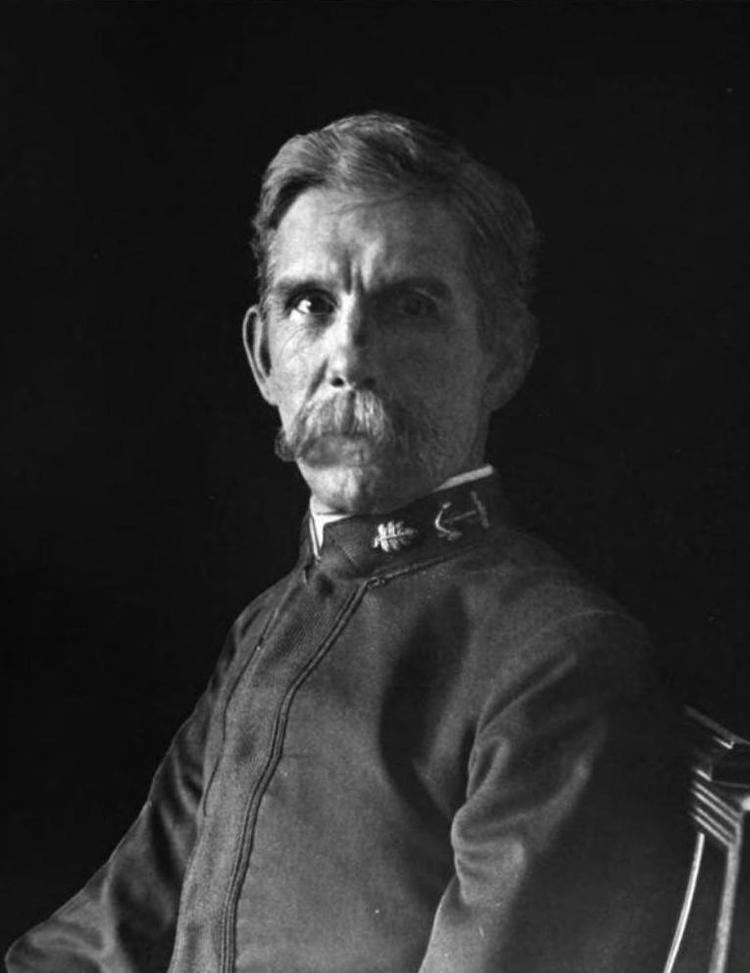Years of service 1868–1911 Service/branch United States Navy | Name Richard Wainwright Rank Rear admiral | |
 | ||
Born December 17, 1849
Washington, D.C. ( 1849-12-17 ) Allegiance United States of America Commands held Office of Naval Intelligence
USS Gloucester
2nd Division, Great White Fleet Battles/wars American Civil War
Sinking of the Maine
Battle of Santiago de Cuba
Banana Wars
Santo Domingo Affair Relations Son of Cmdr. Richard Wainwright
Father of Cmdr. Richard Wainwright Role Spanish–American War naval officer Died March 6, 1926, Washington, D.C., United States Education United States Naval Academy Books Cuba\'s Struggle Against Spain with the Causes of American Intervention and a Full Account of the Spanish-American War: Including Final Peace Negotiations Battles and wars American Civil War, Battle of Santiago de Cuba, Banana Wars, Santo Domingo Affair | ||
Rear Admiral Richard Wainwright (17 December 1849 – 6 March 1926), son of Commander Richard Wainwright, was an officer in the United States Navy during the Spanish–American War.
Contents
Early life and ancestors

Born in Washington, D.C., the son of Sarah Franklin Bache and Richard Wainwright. He was the grandson of Richard Bache, Jr., who served in the Republic of Texas Navy and was elected as a Representative to the Second Texas Legislature in 1847 and Sophia Burrell Dallas, the daughter of Arabella Maria Smith and Alexander J. Dallas an American statesman who served as the U.S. Treasury Secretary under President James Madison. He was great-grandson of Sarah Franklin Bache and Richard Bache, the great-great-grandson of Benjamin Franklin, and a nephew of George Mifflin Dallas the 11th Vice President of the United States who served under James K. Polk.
Early career
Wainwright was appointed to the US Naval Academy in 1864 by President Abraham Lincoln and graduated near the top of his class in 1868. Wainwright's early career is not well documented. From 1890 to 1893 he commanded the Alert, and in 1896 he became the Chief Intelligence Officer of the Navy. In November 1897, he was ordered to the Armored Cruiser Maine, to serve as executive officer under Captain Charles D. Sigsbee.
Spanish–American War
On the night the Maine was blown up in Havana harbor, Wainwright stood beside Sigsbee on the quarterdeck as the vessel was sinking. It was Wainwright who issued the order to lower the lifeboats in which the surviving crew escaped. From the beginning, Wainwright believed the Maine was not blown up by accident and he was impatient to avenge the death of the officers, bluejackets and Marines who died as a result.
In the interval between the blowing up of the Maine and the declaration of war against Spain, Wainwright was assigned command of the tender Fern and placed in charge of the salvage survey and recovery of the bodies of the victims. He stayed aboard throughout the seven weeks long Sampson court of inquiry, never setting foot in ashore. As the initial salvage closed, for concern about oncoming war, Wainwright remained. On the day that the last salvage team was ordered home, the Spanish naval commander in Havana, Admiral Vincente Manterola, ordered the American flag, which was still flying from the rigging of the wrecked Maine, struck. Wainwright heard of the order and, calling an interpreter, issued an order that immediately made him famous,
When Wainwright did finally leave Havana, he hauled down the flag himself. On his arrival in Washington, the U. S. Navy was in the process of purchasing vessels that could be used in the war. Among them was a yacht, the Corsair, owned by J. P. Morgan. She was converted into a gunboat, renamed the Gloucester, and commissioned with Wainwright in command. In the Battle of Santiago de Cuba he engaged the Spanish torpedo boats Furor and Plutón, driving them ashore as wrecks with her battery of 6-pounders. The victory came with no casualties, which was attributed to "The accuracy and rapidity of her fire, making the proper service of the guns on the Spanish ships impossible." Wainwright was commended for his valor in this action and was advanced by ten numbers on the promotion seniority list.
After ordering his heavily damaged flagship Infanta Maria Teresa to run aground, Spanish fleet commander Spanish Admiral Cervera, was picked up by the Gloucester. Wainwright was there to greet him as he was brought aboard. "I congratulate you, sir," said the American, "on having made as gallant a fight as was ever seen on the sea."
1900-1911
From 1900–1902, Wainwright was Superintendent of United States Naval Academy. During this time, the submarine boat Holland was in Annapolis to train crews for submarines then under construction. Wainwright, having this opportunity to observe their operation, fully endorsed them for their planned harbor defense role.
In 1904 he commanded American forces during the Santo Domingo Affair in which his ships shelled rebel troops and supported an amphibious assault. Later, promoted to rear admiral, he commanded the Second Division of the Great White Fleet during that fleet's historic voyage around the world from 1907-1909.
Retired from active duty on December 7, 1911. Admiral Wainwright died on March 6, 1926 in Washington, D.C.
Marriage and family
He married on September 11, 1873 at Washington, D.C., Evelyn Wotherspoon, born June 13, 1853 at Washington, D.C., and died on November 24, 1937 at Washington, D.C. Their son, Richard Wainwright, Jr., Commander, United States Navy, earned the Medal of Honor for his service at Veracruz, Mexico, and is also buried in the cemetery at the United States Naval Academy.
A Naval Academy classmate, Admiral Seaton Schroeder, became his brother-in-law when he married Wainwright's sister, Maria Campbell Bache Wainwright.
Namesakes
Three ships have been named USS Wainwright for Richard, his father, his son and two cousins.
